THE DAY AFTER Halloween is known, in Christianity, as Hallowmas or The Feast of All Saints. This holy day celebrates all those souls who have achieved beatification. The following day, November 2, is the Feast of All Souls. The latter honors those atoning for their sins in Purgatory, the in-between place where dead Christians go to make up for their naughtiness before flying off to Heaven.
I figured November would be a good time to talk about ghosts. I spent most of October and the days of Hurricane Sandy watching ghost stories. (I’m defining “ghost story” as any movie actually about a haunting OR which behaves like one.)
Some of the flicks put me to sleep. After the 30th time a soundtrack boomed to underscore an accompanying “scary” image, muddling on began to feel like swimming through ectoplasmic jello. But I sacrificed myself.
Ghosts, in fiction, tend to be identified by their hold on the earthly plane, with hauntings traditionally seen as the machinations of restless souls. Ghosts can be full of grief, sorrow, anger, bent on vengeance, taken from the earth too soon or in violent ways. Long before The Legend of Sleepy Hollow and well beyond The Amityville Horror, ghost stories have filled the imaginations of the suggestible and the pragmatical with the notion that loved ones don’t disappear when their earthly bodies give out.
In the 19th Century, the desire to communicate with the dead gave rise to Spiritualism, a fad traced back to a prank played by the Fox sisters of Hydseville, NY (though Swedish philosopher Emanuel Swedenborg had explored aspects of it a century earlier.) The movement reached its peak in the United States in the late 1890’s; séances, mediums, crystal balls allowed the grieving to trade recipes and treasure maps with their loved ones.
Cinematic hauntings have produced respected classics like The Haunting (1963 – embarrassingly remade in 1999), The Innocents, mentioned in last month’s My Year of Horror: 13 Fundamental Films for October, and The Uninvited (the 1944 version, not the unrelated American film of the same title from 2009, which is actually based on the Korean ghost film, A Tale of Two Sisters [2003], nor the other unrelated Korean film of the same title from 2003 and 2008. Confused yet? Don’t name your film “The Uninvited.”)
Those who favor modern horror often overlook the chills to be had in classic films, the pacing of which tends to be slower and the acting style, highly theatrical. Some of those films have not withstood the test of time but there are contemporary films like Poltergeist, The Sixth Sense, Amityville and Paranormal Activity (not technically a haunting) that have worked their way into the public consciousness. It remains to be seen how those will last. Amityville garnered a middling remake, Poltergeist is still seen on many “best of” lists (with a remake being discussed to be produced by Sam Raimi) and Paranormal has spawned the inevitable (*shiver*) “franchise.”
Today, reality show doldrums combined with the influence of “found-footage” cinema (like The Blair Witch Project) have given rise to enough interchangeable, supernatural TV shows that you could probably “Choose One From Column A and One From Column B” to create your title: Paranormal Haunting, Supercalifragilistic Ghost Stories and Scared Celebrities. All of this programming is designed to play on your willingness to believe in a spectral plane.
This month is a compendium. I watched every film for one or more of the following reasons:
- It was recommended to me.
- I heard it was REALLY bad.
- I heard it was REALLY good.
- It’s one of those movies you are supposed to see.
- I’ve seen it already and am watching it again to test my opinion.
This isn’t a Top 10 List. It’s a list in ascending order of preference. The leap from 10 to 9 is like a vast chasm from dreck to taste. Number 10 shouldn’t even be mentioned except that it’s so horrible and I wasted 90 minutes of my life on it so I’m writing about it. Here is my journey into the unknown:
10. The Haunting (1999): Are you kidding me with this??? One of the worst film remakes I’ve ever seen. Ever. Next. See below for my impression of the original, 1964 version. Should you watch it? NO. NO. NO. Just NO. GOD NO!!!!!!!!!!!
9. Ringu is the sensation which started the influx of Asian horror and scads English-language remakes. Without the gore or torture effects we’ve come to expect from horror, Ringu and its American remake, The Ring, are old-fashioned hauntings with a contemporary twist: modern technology.
Horror films of any period can be associated with contemporary fears: the development of nuclear power gave rise to the “big bug” movies of the 50’s, the AIDS crisis has transformed zombies into undead receptacles of a deadly virus, and Ringu plays on fears of technology though, at this point, the videotape has gone the way of the 8-track.
So there’s this video tape and if you watch it, you die in 7 days. Sadako, a ghost with long black hair who seems to have forged an excellent career in Asian horror, will emerge from your television on the 7th day and stop your heart. (By the way, the first appearance of a Sadako-like ghost is in 1964’s Kwaidan, a collection of ghost stories featuring “The Black Hair” about a man haunted by his past.) A newspaper reporter and mother, Reiko, is drawn into the ring after watching the tape while investigating the death of a teenager who had also seen it. When Reiko’s ex-husband and son both watch the tape against her wishes, the remainder of the film is a race to save all three lives.
The great pleasure of Ringu is its mystery – it tells us just enough to freak us out. The American remake, in an effort to explain the inexplicable, tells us too much, spoiling the gravitas. I’m of the mind that curiosity kills not only the cat but the drama and while it may help the filmmaker and the actors with perspective, it’s a lot of mumbo-jumbo for an audience. Leave us with some mystery and we’re sure to shiver in our shoes. The tepid remake of Halloween and the god-awful Nightmare on Elm Street retread (even Tim Burton’s peculiar Charlie and the Chocolate Factory) spend a lot of time examining the pasts of characters better left unknown. The Ring suffers the need to satisfy American curiosity but Ringu is just a little less transparent.
Ringu also has some other merits which put it at an advantage. The ghost, Sadako, is played by adult Kabuki theatre actress, Rie Ino’o, and her bizarre movement is the result of a simple technique: the actress was filmed walking backwards and played in reverse when the film was edited, giving the ghost an exaggerated awkwardness. In The Ring child actress Daveigh Chase does a credible job at playing the creepy ghost but looks like child actress doing a credible job of playing a creepy ghost. Ringu’s lead performances by Nanako Matsushima as Reiko, Hiroyuki Sanada as ex-husband Ryūji and especially Rikiya Ôtaka as son, Yoichi give us a believable, broken family to care about.
If it came down to a choice, both films have their merits and their weaknessnes but Ringu is the stronger of the two.
Should you watch it? Yes.
8. Insidious, Leigh Whannel and James Wan’s take on the haunted house genre, is a potentially excellent movie completely undone by its delusional final act. An homage to (or rip-off of?) Poltergeist, this film has enough of its own scare-ific moments to justify its existence. The first act is grandly frightening, with ghostly figures at the corners of the frame and some exceptional jump scares directly related to the plot: no cats at the window for Insidious.
The plot is familiar – a family moves into a new house and creepy things start happening. The film takes a few unexpected turns when the son goes into a coma and the family, convinced the house is haunted, moves to another house where supernatural events continue. This all works very well until writer/actor Leigh Whannel and co-star Angus Sampson show up as bumbling, Scooby-Doo like investigators. Their equipment is stocked with an inventory of home-made paranormal detection devices in the form of a Viewmaster Viewfinder and a gas mask attached to a long, flexible vacuum hose (don’t ask.) It almost works but the home-made equipment and jokey humor of Whannel & Sampson’s contribution begins a descent into silliness from which Insidious cannot escape. (Lin Shaye takes the Zelda Rubenstein role as a medium.) The movie slowly devolves from here.
By the time it sends Patrick Wilson into “The Further” (the movie’s name for the place between life and death) to retrieve his abducted son, Insidious has completely jumped the shark, with fake fog on a black set, far off lantern lights, a demon sharpening his gauntlets on a grinding wheel and a silly 1950’s family which should be scary but turns Insidious into Pee-Wee’s Big Adventure. You expect Large Marge to say “It looked like this!”
Should you watch it? Sure. But don’t say I didn’t warn you.
7. The Fog is a flawed John Carpenter film with exquisitely staged suspense and a strong cast, both of which make it hard to resist. In his follow-up to Halloween, Carpenter and co-writer/producer Debra Hill bring together the usual Carpenter suspects, Jamie Lee Curtis, Adrienne Barbeau and Tom Atkins, with high-profile names Hal Holbrook, Janet Leigh and John Houseman (for a compelling opening cameo.) Despite some script weaknesses, Carpenter, Hill and cast do an impressive job of moving as far away from the hit slasher of two years earlier.
The story concerns a crew of dead sailors who demand retribution from the residents of the town which conspired against them. On the 100th Anniversary of the establishment of Antonio Bay, the ghost crew returns, traveling by night in a dense, glowing fog, carrying lots of sharp, pointy weapons. Holbrook, as a descendant of one of the town’s founding fathers, is the local priest who discovers an important secret: the key to the ghosts’ unrest. It’s an uncomplicated set-up, and the plot is compressed into a 24-hour period, with Carpenter balancing several unrelated characters. (Barbeau, for instance, as a radio DJ who broadcasts from atop a lighthouse station, is alone through most of the film but we grow to care about her through her interaction with her son.) The script does a remarkable job of sketching in little hints about these characters just as Carpenter and Debra Hill did on Halloween.
Carpenter uses our anticipation to great advantage. Opening with a seaside campfire story, told by Houseman at his most ominous, Carpenter then treats us to some ghostly goings-on before taking us to the first murders, brutal but largely in shadows and fog. Having prepared us for horrors to come, the script introduces our major characters and sets about uncovering the film’s central mystery: why and how the sailors were wronged. The unknown being more important than Stephen King’s “revelation of horror,” The Fog may bank a little too hard on our suspension of disbelief, but Carpenter’s skill in manipulating our emotions was at its zenith.
Should you watch it? Totally.
6. Carnival of Souls is what you get when you cross David Lynch, Ingmar Bergman and Roger Corman. Shot in 3 weeks in 1962 on a $33,000 budget, the film has become a cult classic though it was largely ignored in its initial run. The Criterion Collection acquired the film and released a digital transfer with some very good extras, making it worth the rental for its history alone.
Filmmaker Herk Harvey was reportedly inspired by the abandoned Saltair Pavilion on the shore of Utah’s Great Salt Lake. Built in the late 19th Century, Saltair was a typical boardwalk, albeit at lakeside, offering amusements and salt water bathing until its desertion in 1958. Saltair is the core of the film’s weirdness and its lonely settings make haunting cinematic pictures.
The film opens as Mary Henry suffers the loss of two friends in a terrible car accident. As the sole survivor, she does her best to forge on after these devastating events, landing a job as a church organist in a remote town. Along the way, she spots the Pavilion and then the weird stuff starts happening: faces in the window, Mary’s organ playing goes all freaky-deaky and she begins to suffer what may or may not be periods of temporary insanity. Mary is compelled to visit the Pavilion and her haunting experiences compound the surreal.
The movie takes a Lynchian turn which is nearly undone by the limitations of its budget: limited camera angles and some howlingly bad acting. But the banality adds to the bizarre atmosphere and clustered among the stationary camera work are some beautifully framed shots. The ending is not particularly surprising but the overall effect induces goose bumps.
Should you watch it? Hell yes.
5. The Haunting (1963), directed by the great Robert Wise (who was responsible for the films of West Side Story and The Sound Music, as well as sci-fi classic The Day The Earth Stood Still) is one of those respected films which, I am embarrassed to say, I just don’t find interesting. I say “embarrassed” because some people absolutely love this movie. With an excellent cast, great care lavished upon it by one of my favorite directors, and superb source material in Shirley Jackson’s The Haunting of Hill House, the film is worthy of respect but I don’t find the drama particularly interesting and the film has never scared me – not even as a child who was afraid of everything.
Dr. John Markway (Richard Johnson) has invited a group of people together to help scientifically prove the existence of the supernatural at Hill House, an abode of great evil which, in its 80-year history, has been host to suicides, mysterious deaths and other inexplicable events. Among the guests is the repressed and shy Eleanor Lance (played with fervor by the appealing and wonderful Julie Harris), who has been brought to the house because of her history with paranormal activity. Claire Bloom plays a bohemian and probably lesbian free spirit with ESP named Theo and the sexy Russ Tamblyn is Luke Sanderson, skeptical heir to Hill House.
The novel makes it clear that ambiguity is the name of the game; we are never quite sure if the mysterious events are psychic manifestations of Eleanor’s deep repression or if the house is really out to claim her. The film attempts to capture that lack of clarity but is only partially successful – Eleanor begins to seem insane right from the get-go and the characters’ relationships are too familiar too quickly. Instead of feeling off-kilter, abrupt transitions from civility to unpleasantness just seem awkward
Wise effectively uses quick cuts and awkward angles to jar the viewer’s senses, but most of the film feels as if it were shot on a soundstage – looking and sounding like low-budget TV from the 60’s. Then there’s the problem of Eleanor’s unnecessary narration which begins to stifle our involvement (just like in SHOWTIME’S Dexter) as she continually says things we have already inferred.
With so much going for it, The Haunting is most notable for one scene: Eleanor and Theo clutching each other in great fear as an unseen force pounds violently at the bedroom door. Wise makes it seem as if the door is expanding and contracting as the deafening attack goes on. It’s scary stuff. The rest of film is writing on the wall, talk about cold spots and a few eerie walks down long hallways. We do grow to care about Eleanor, which is the point of the whole exercise. For a film bearing similar ambiguity, sexual repression and chillier chills, I still prefer The Innocents.
Should you watch it? Yes, it’s a bit of movie history.
4. The Legend of Hell House is writer Richard Matheson’s answer to The Haunting. Matheson is the prolific novelist and screenwriter responsible for I Am Legend, Bid Time Return (filmed as Somewhere in Time), What Dreams May Come, “Amelia” (the infamous Karen Black “zuni fetish doll” episode of Trilogy of Terror) and “Nightmare at 20,000 Feet” from The Twilight Zone (first filmed with William Shatner and later remade with John Lithgow). Matheson was inducted into the Science Fiction Hall of Fame in 2010.
Matheson’s novel, Hell House, begins on a premise almost identical to Shirley Jackson’s The Haunting of Hill House. [Just for quick reference: Hell House is Matheson’s novel and The Legend of Hell House is the film. The Haunting of Hill House is Jackson’s novel and The Haunting is the film based on it. Confused yet?] But where Shirley Jackson’s story is all repression, ambiguity and mystery, Matheson baptizes his tale with perversion, sexual torture and mass murder.
Matheson adapted his novel for the screen in 1973 for a film under the direction of John Hough. It stars Roddy McDowell, Pamela Franklin (who made her film debut in another psycho-sexual ghost story, The Innocents), Clive Revill and Gayle Hunnicutt as strangers gathered at the Belasco Mansion for an investigation into the afterlife. At this “Mount Everest of haunted houses” they experience all manner of paranormal, sexual phenomena; one of them – Ms. Franklin as a pious, Christian medium – is even raped by a ghost. Something about the combination of the erotic and the bizarre speaks to the fears brought on by the sexual revolution and Matheson underlines this as each of the investigators is consumed by the house’s evil.
It reminds me a bit of American Horror Story where everything including the kitchen sink is tossed in. But The Legend of Hell House is held together by the commitment of its cast and it’s growing atmosphere of dread. Roddy McDowell was never a great actor but he was an appealing one and makes the most of his role while Pamela Franklin dives into hers with full commitment.
This movie is the darker side of The Haunting and watching both in a double feature would make for an evening’s worth of conversation over wine, leftover Halloween candy and maybe some succulent pumpkin pie… Just do yourself a favor and cue Hell House up 2nd. It’s bolder, weirder and kookier than Hill House.
Should you watch it? Oh helllllll yes!
3. Poltergeist is one of those films whose mention on a list of ghost stories is nearly redundant; I don’t think I know a single person who hasn’t seen it. It’s on the list because on 400th viewing it’s still so damned fun. With its funhouse feel, it hardly qualifies as horror but it will scare the rug-rats even as it makes teenagers and teens-at-heart giggle with glee.
Directed by Tobe Hooper (The Texas Chainsaw Massacre) and bearing Steven Speilberg’s signature in every frame, the film’s actual direction has been debated since it opened. Doesn’t matter. There is everything to like about this movie. If a criticism can be lobbed, it might be that its chills are of the carnival variety and its ghosts are a fantasia of special effects. Performances are excellent all around – especially notable are JoBeth Williams who radiates warmth and Zelda Rubenstein as a psychic whose dialogue is so memorable that almost every child of the 80’s can quote it verbatim.
See it again if it’s been a while since last viewing. And if you’ve never seen it – how lucky you are! You get to experience its pleasures for the first time!
Should you watch it? Why are you even asking this question?
2. The Orphanage (El Orfanato) – I am overly fond of this movie. It has flaws, don’t get me wrong, but I was enchanted by it when the chatty, cell-phone using audience with whom I saw it went dead silent during its two scariest moments.
When the ghosts make their first appearance, director Juan Antonio Bayona uses the camera in such a way that he sets us off guard while simultaneously setting us on edge. No spoiler here but I’ll tell you that a game of Grandmother’s Footsteps has never been so terrifying. (Grandmother’s Footsteps is a children’s game known by various names including Redlight/Greenlight, Statues and The Judgment.) and That’s not the only children’s game used to scary advantage. There are also references to Peter Pan and a kind of treasure hunt that resurfaces for the film’s climax, duplicating and improving a technique from The Sixth Sense.
Spanish actress Belén Rueda (taking exceptional advantage of her star turn) plays Laura, a middle-aged mom who has returned to the orphanage where she was raised to open a facility for disabled children. She and her husband Carlos (the equally fine Fernando Cayo) begin to experience strange goings-on when their son, Simon, begins communicating with “imaginary friends.” You can take it from there. Except that you can’t. The story never goes quite where you would expect. Even the employment of a psychic and her team of paranormal investigators (a haunted house trope, brilliantly realized in the performance of Geraldine Chaplain), providing the second of those chilling sequences, ends on a moving note.
The Orphanage has an emotional center that makes it unique and, unlike many Hollywood horrors, the evil events spare no one. Innocent children draw one’s sympathies and The Orphanage, weaving together grief, nostalgia and fear, elicits more compassion than you might think at the outset. It is a story about mothers’ love. Parts of the film are unbearably painful but its ending is strangely uplifting.
Should you watch it? Without a doubt.
1. Lake Mungo was my favorite for October and was recommended by my dear friend Dan, whose Horror DIEt on Facebook makes an appearance every year with suggestions for almost every day of the month. If you can forgive its lazy, generic title (which sounds like a vacation spot for circus clowns) Lake Mungo will work its magic.
This eerie, Australian, mock-documentary (not a “found footage” film like The Blair Witch Project or Paranormal Activity) tells its tale through interviews, footage, and reenactments. The drowning of a teenage girl, Alice Palmer, is the subject and “interviews” are conducted with her parents, teenage brother, grandparents, best friend, and a psychic. The performances are remarkable for their restraint and subtlety. The stark realism makes you wonder if you are actually watching a work of fiction.
As we go deeper, Lake Mungo grows more unsettling with glimpses of ghostly shadows and apparitions on video and in photographs. Questions linger – we are never quite clear of the ghost’s motives. Alice is a restless soul and the movie leaves us without answers, making it a great deal more interesting than movies which uncover mysteries better left in the dark. In detailing Alice’s relationship with her next door neighbors, it introduces a thread which is never satisfactorily woven into the story, that that lingering question is consistent with Lake Mungo’s defiant mystery.
The strength and drawback of Lake Mungo is that it requires your intellectual curiosity and refuses to answer the questions is raises. But don’t let that scare you away. Chilling, eerie, creepy, unnerving and spooky are the words I’d use to describe it. Like the Palmer family, you are left pondering the existence of ghosts, of the “other side,” of eternity and of your own mortality.
Should you watch it? Absolutely. With a loved one nearby.
And here is the other stuff I watched. This may or may not spare you:
Candyman – This film gets a special mention for its beautiful direction, sinister tone, and likable heroine in Virginia Madsen. Tony Todd is terrific as the romantic-but-terrifying hook-handed spectre. This is a little gem. Quiet but eerie. Be patient – it has the pacing of a languid dream but pays off as a horror fable of sorts. Watch it.
The Devil’s Backbone – excellent excellent excellent Guillermo del Toro creeper starring Pedro Almodóvar regular, Marisa Paredes. If you liked Pan’s Labyrinth and The Orphanage, see this. Watch this.
Dream House – For the sake of Daniel Craig’s career, I’m glad Skyfall has gotten such good reviews. Only watch this movie if you have things you want to smash nearby.
The Haunting of Molly Hartley – kiddie horror. Practically a TV movie of the week. Dumb. Do your laundry instead.
Ju-On (The Grudge) raises a lot of questions for me like what the hell is this movie about? And why is the ghost from Ringu starring in it? Was there a shortage on ghosts? A shortage on production designers? A shortage of writer creativity? Is black hair the only thing Japanese ghosts can come up with to scare us? I find this movie tedious.
Kairo (“Circuit”) – is the basis for the American film, Pulse. While there are some excellent moments, it’s languorous pacing puts you to sleep. It’s also depressing as hell. Only watch it if you have a bottle of Xanax in your medicine cabinet.
Kwaidan – a Japanese compendium of ghost stories, not all compelling, but artfully rendered. A curiosity for its fine film-making and the early appearance of the black-haired, Japanese ghost. Watch it if you’re a film buff.
Paranormal Activity – I like this movie. It works. The audience was scared when I saw it. Watching it alone in your apartment – at night – makes you want to move very quietly in the dark so nothing can hear that you’re alive. Worth your time.
The Uninvited – which one? The American 1944 haunting film with Ray Milland is a period curiosity. Decent but dated. The 2009 American version of A Tale of Two Sisters is a disappointing retread of a mediocre original. See the first one if you’re a film buff. Skip the latter; it’s pointless.
What Lies Beneath – meh. Good peformance from Michelle Pfeiffer and but so-so storyline. Meh.

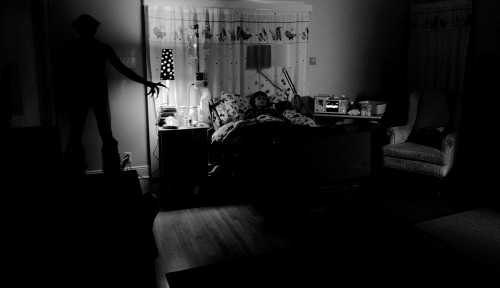
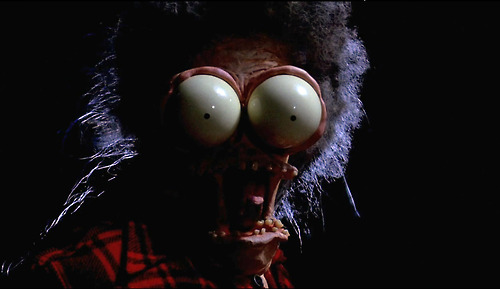
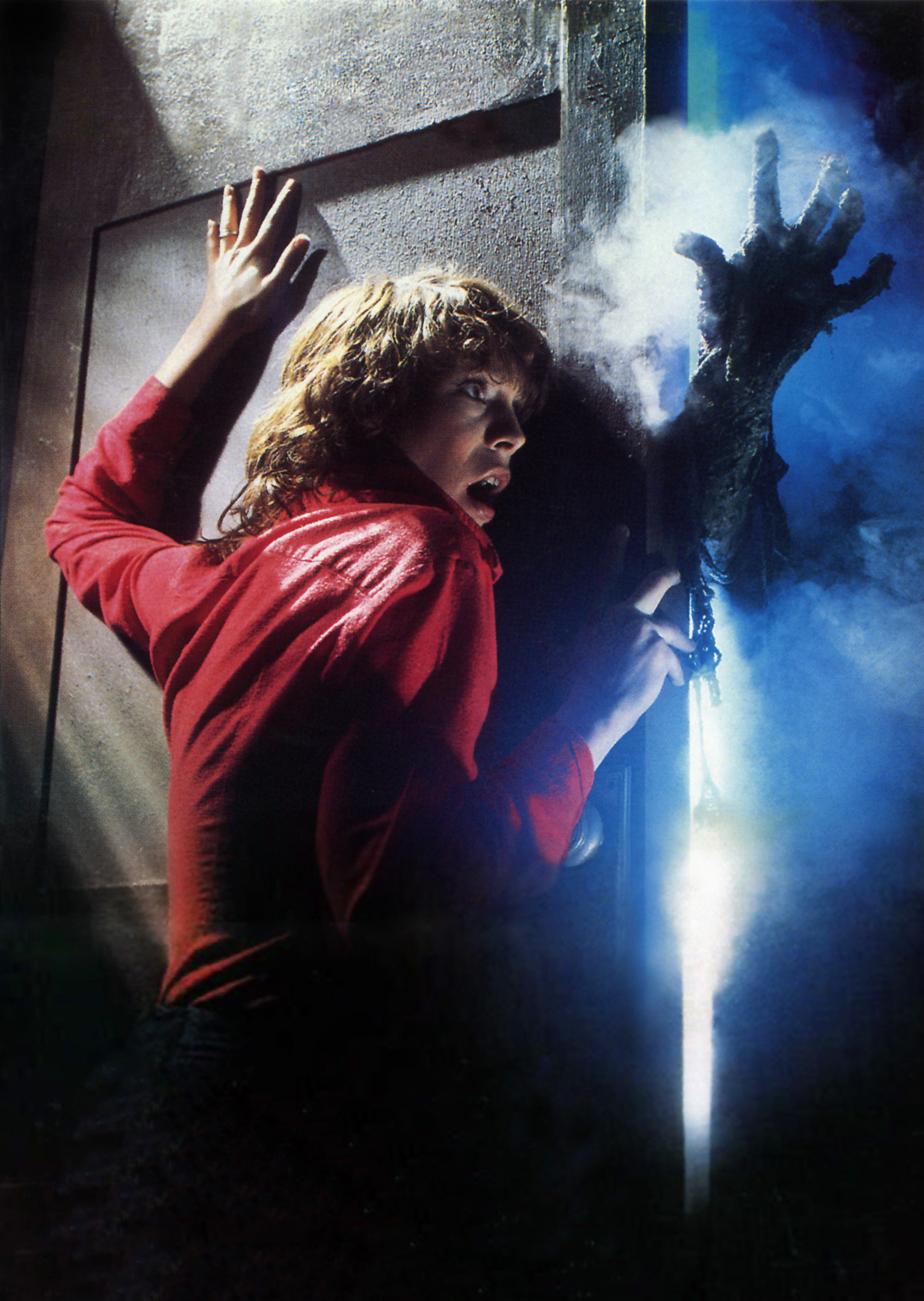

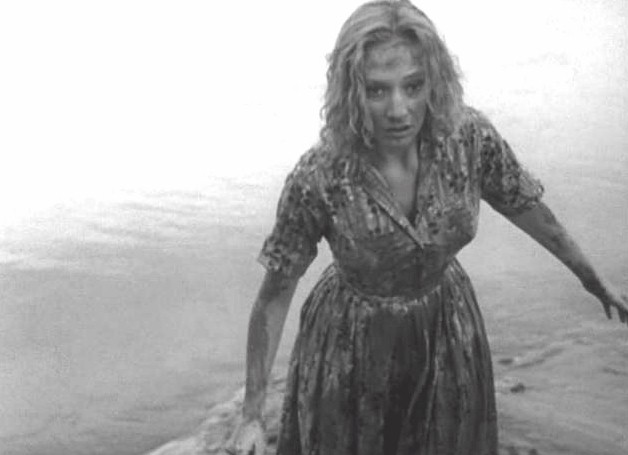
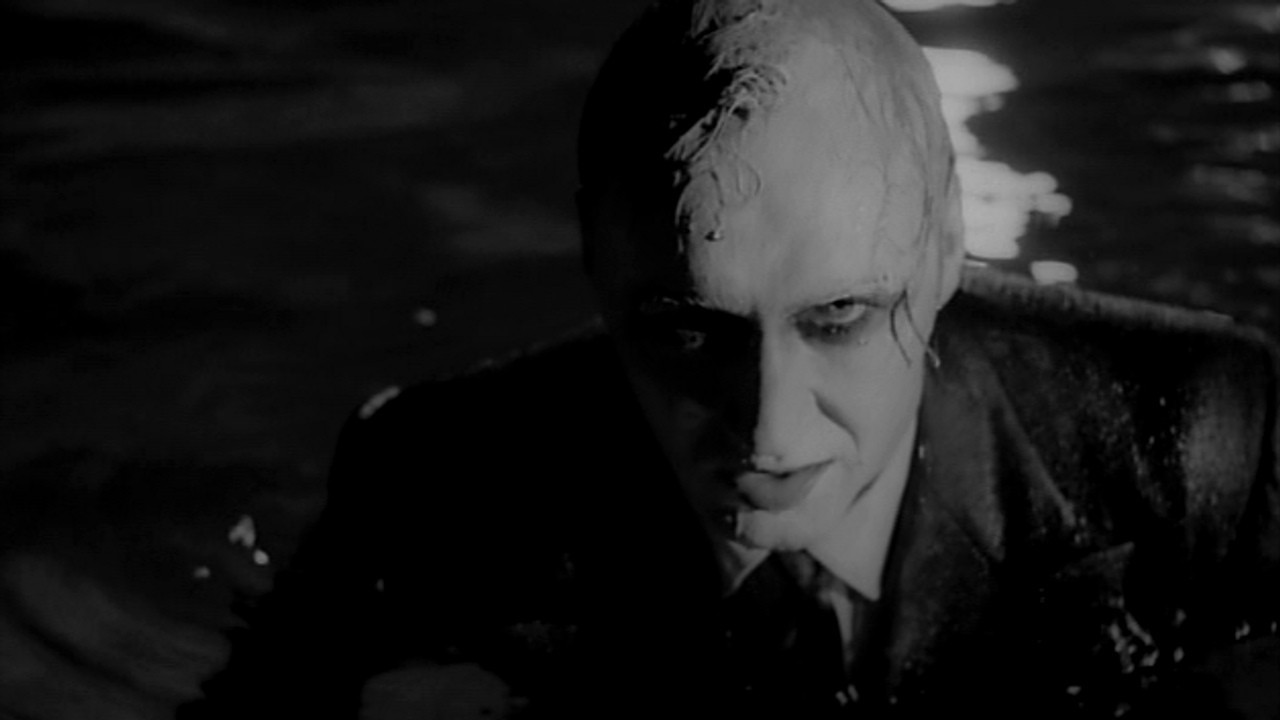
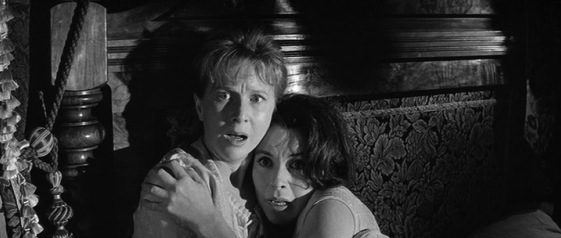

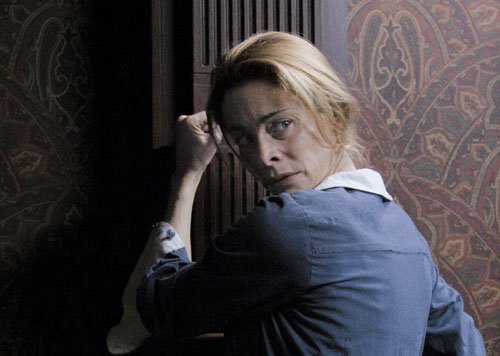


I don’t know, I liked those two guys in INSIDIOUS. They brought a nice touch of comic relief (a little contemporary GHOSTBUSTERS) to the plot, and I thought that it was because they didn’t take themselves too seriously that made their fear more palpable. And there were definite elements of that last act that I didn’t like, but the Tiny Tim song (is that what it was?) was perfectly chosen for it’s role.
I think I would have been ok with “Tiptoe Through the Tulips” if the last act didn’t seem so much like the PEE WEE’S PLAYHOUSE version of hell.
Trying to find a link to a book that I had read in the 1940’s…characters; Willie Harbottle (or, Harbuckle) and, ‘the man in the red socks’.
many thanks.